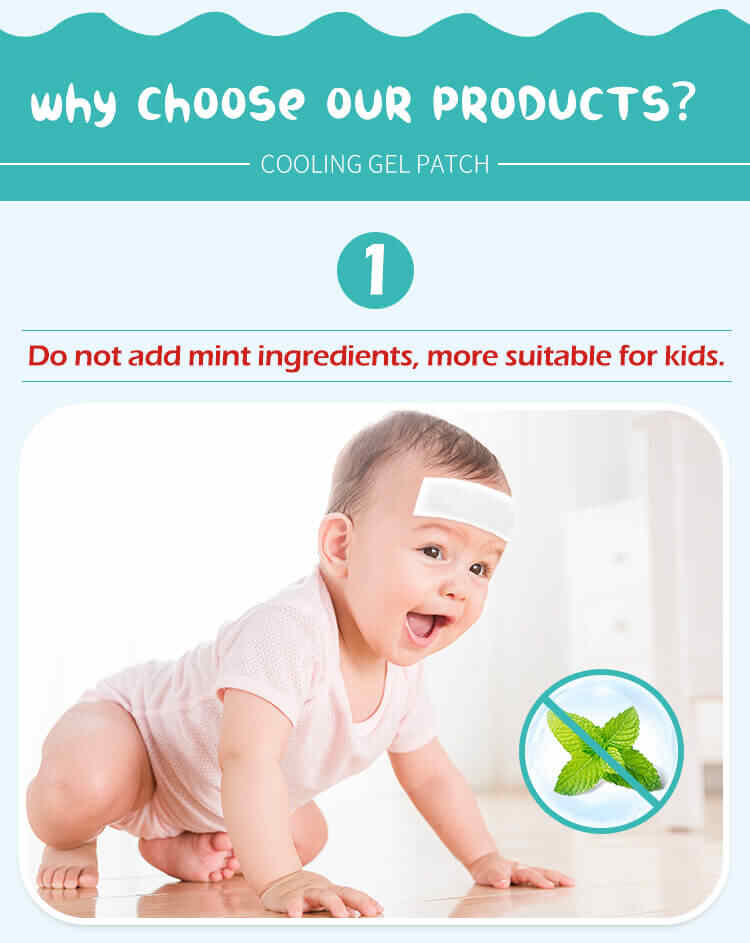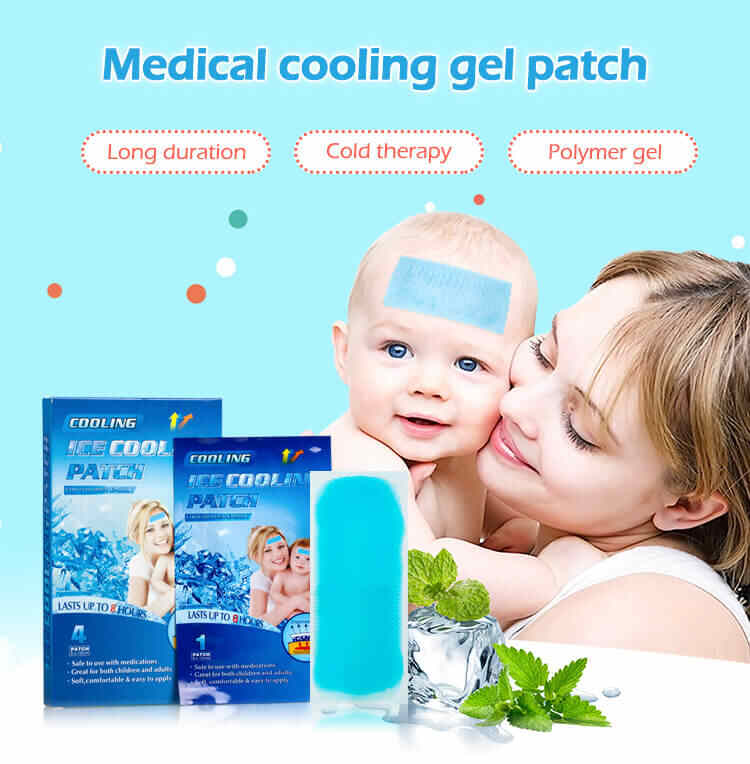How Are Custom Cooling Relief Gel Patches Tested for Quality?
In the competitive healthcare and wellness industry, consumers expect products that are safe, effective, and reliable. For businesses collaborating with a cooling relief gel patches Manufacturer or working with a cooling relief gel patches OEM (Original Equipment Manufacturer), quality testing is the most critical factor in ensuring product success.
When developing Custom cooling relief gel patches or launching Private Label cooling relief gel patches, rigorous quality testing guarantees that products meet international standards, satisfy customer expectations, and strengthen brand reputation. From raw material inspection to stability analysis, every stage of testing is designed to minimize risks and deliver consistent results.
This article explores how Custom cooling relief gel patches are tested for quality and why these procedures are essential for businesses and consumers alike.

1. Importance of Quality Testing in Cooling Relief Gel Patches OEM
Before a cooling relief gel patch reaches consumers, it must pass multiple layers of quality evaluation. For a cooling relief gel patches Manufacturer, testing ensures safety, consistency, and compliance with international standards.
Consumer Safety: Prevents skin irritation, allergic reactions, and contamination risks.
Regulatory Compliance: Ensures alignment with FDA, CE, ISO, and GMP requirements.
Market Competitiveness: Builds consumer trust, strengthens brand reputation, and reduces recall risks.
For brands offering Private Label cooling relief gel patches, OEM quality testing is the foundation of credibility and market success.
2. Raw Material Testing: The First Step in Quality Assurance
The effectiveness of Custom cooling relief gel patches depends heavily on the raw materials used, such as hydrogels, adhesives, and active cooling agents.
Purity Verification: Ensures raw materials are free from contaminants.
Ingredient Consistency: Confirms that menthol, herbal extracts, or other active components meet the required concentrations.
Safety Checks: Identifies allergens or skin-irritating substances.
A trusted cooling relief gel patches Supplier conducts raw material inspections before production begins, reducing risks from the very start of the process.
3. Microbiological Testing for Safety
Since cooling patches are applied directly to the skin, they must be free from harmful microorganisms.
Bacterial Testing: Identifies and eliminates pathogens that may cause infections.
Fungal and Yeast Analysis: Ensures no microbial growth during storage.
Sterility Assurance: Critical for Custom cooling relief gel patches designed for sensitive skin or medical use.
This testing step reassures both businesses and end users that patches are safe for everyday use.
4. Adhesive Strength and Skin Compatibility Testing
The adhesive layer is one of the most important components of a cooling gel patch.
Adhesive Strength Testing: Ensures the patch sticks firmly without causing discomfort.
Skin Irritation Studies: Conducted on volunteers or through dermatological assessments.
Hypoallergenic Testing: Especially important for Private Label cooling relief gel patches, since they are often marketed as safe for all skin types.
By working with a professional cooling relief gel patches Manufacturer, brands minimize risks of customer complaints about patches not sticking properly or causing irritation.
5. Cooling Effectiveness and Performance Testing
The main purpose of a cooling gel patch is to provide effective relief. Testing ensures that the patch performs as promised.
Cooling Duration Tests: Measures how long the patch maintains its cooling effect.
Temperature Drop Analysis: Confirms that the patch lowers skin temperature to a safe, effective level.
User Experience Studies: Gathers consumer feedback on comfort, effectiveness, and satisfaction.
For Custom cooling relief gel patches with herbal or advanced formulations, these tests validate that new ingredients enhance rather than compromise performance.
6. Stability Testing for Shelf Life and Packaging
Products must remain effective and safe throughout their shelf life.
Accelerated Aging Tests: Simulates long-term storage conditions to predict shelf life.
Packaging Integrity Tests: Ensures that individual pouches or boxes protect patches from contamination and moisture.
Temperature and Humidity Resistance: Important for global distribution where climates differ.
A reliable cooling relief gel patches OEM provides stability data to assure brands and regulators of product durability.
7. Compliance Testing for Regulatory Approval
Different markets require specific compliance tests before products can be sold.
FDA Guidelines (U.S.): Covers safety, labeling, and medical classification.
CE Certification (Europe): Confirms safety and performance standards.
ISO 13485 & GMP Standards: Demonstrates that manufacturing processes follow medical device protocols.
For businesses selling Private Label cooling relief gel patches, compliance testing prevents legal risks and supports smooth entry into international markets.
8. Dermatological and Clinical Trials
Some brands choose to conduct dermatological tests or small-scale clinical studies to build additional credibility.
Dermatologist-Approved Labels: Boost consumer trust.
Clinical Effectiveness Trials: Provide scientific evidence for marketing claims.
Consumer Use Testing: Ensures real-world performance matches laboratory results.
These trials are especially valuable for Custom cooling relief gel patches designed with unique herbal formulations, as they demonstrate both innovation and safety.
9. Continuous Quality Monitoring by Cooling Relief Gel Patches Suppliers
Quality testing is not a one-time process. Trusted cooling relief gel patches Suppliers implement continuous monitoring systems.
Batch-to-Batch Consistency Checks: Ensures every production run meets the same standards.
Random Product Sampling: Identifies potential issues before distribution.
Ongoing Feedback Integration: Uses customer insights to improve product quality.
This ongoing vigilance ensures long-term reliability and strengthens business relationships.
10. Why Businesses Must Prioritize OEM Quality Testing
Choosing a cooling relief gel patches OEM that prioritizes quality testing offers businesses major advantages:
Reduces risks of recalls and lawsuits.
Ensures compliance with international regulations.
Protects brand reputation.
Builds consumer trust and loyalty.
Whether producing Custom cooling relief gel patches or selling Private Label cooling relief gel patches, rigorous quality testing is the backbone of sustainable business success.
Conclusion
Quality testing is not just a technical requirement—it is a strategic investment in consumer safety, regulatory compliance, and brand reputation. From raw material verification to clinical testing, every stage of evaluation ensures that Custom cooling relief gel patches deliver safe, effective, and consistent results.
For businesses working with a cooling relief gel patches Manufacturer, partnering with an OEM that implements strict quality systems is the best way to reduce risks and gain a competitive edge. Whether sourcing from a cooling relief gel patches Supplier or launching Private Label cooling relief gel patches, prioritizing quality testing ensures long-term success in an increasingly competitive market.
Related Questions and Answers
Q1: Why is quality testing important for Custom cooling relief gel patches?
A1: It ensures safety, consistency, and performance while reducing risks of recalls, complaints, or regulatory penalties.
Q2: What tests are done to check the cooling effectiveness of gel patches?
A2: Cooling duration, temperature drop analysis, and user experience studies are commonly performed.
Q3: How do cooling relief gel patches Manufacturers test adhesives?
A3: Adhesive strength, skin irritation, and hypoallergenic studies ensure safe and comfortable application.
Q4: Do Private Label cooling relief gel patches require clinical trials?
A4: While not always mandatory, clinical or dermatological testing boosts credibility and consumer trust.
Q5: How do cooling relief gel patches Suppliers ensure consistent quality?
A5: They conduct batch testing, random sampling, and continuous monitoring throughout production.






